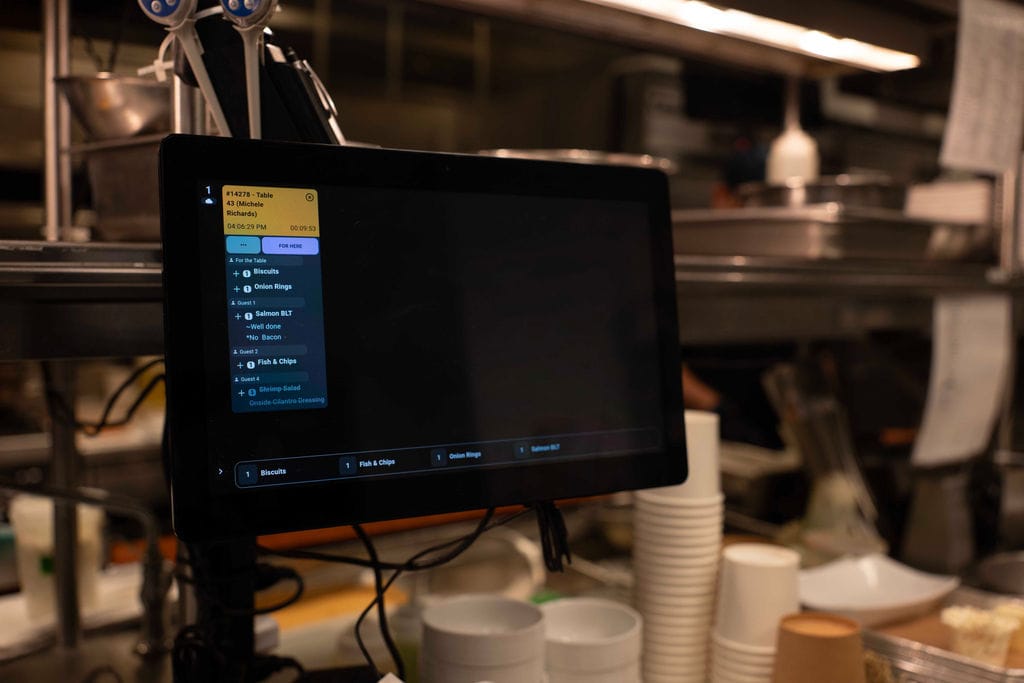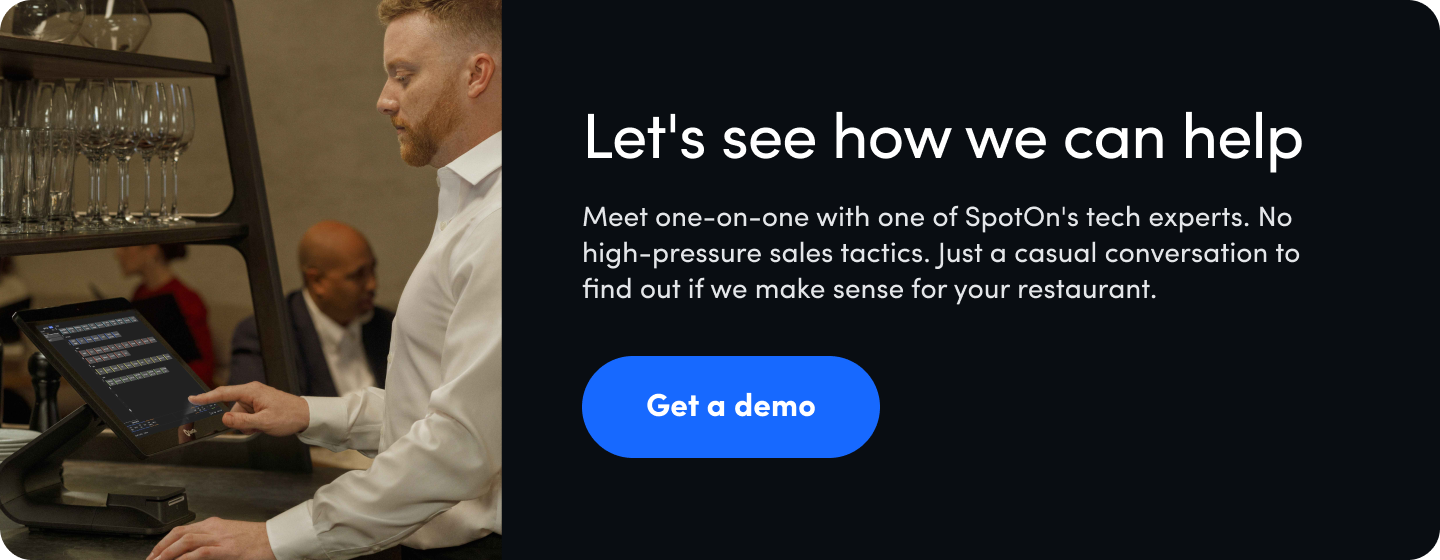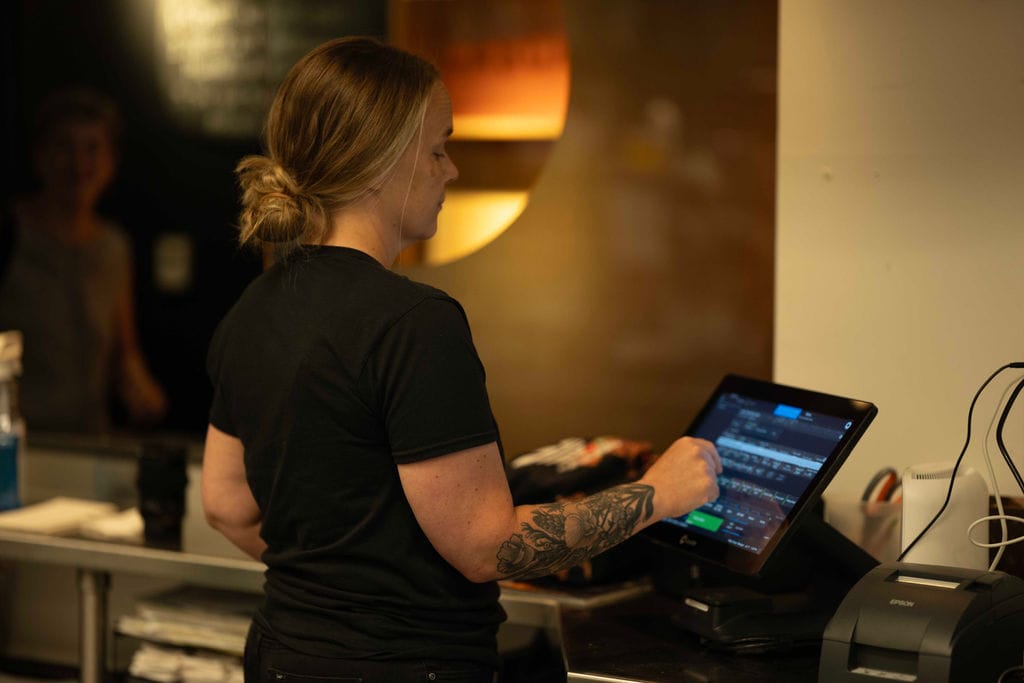The POS system is a restaurant's command center. It's essential for smooth operations, accurate reporting, and a great guest experience. If you run a restaurant, you know this, so you're probably weighing the many options for POS systems carefully.
As with any business decision, you'll need to consider a long list of factors. There are the features, support, hardware, and software, upfront POS hardware costs, and monthly subscription fees. You'll want to consult your staff, third-party review sites, and fellow restaurant owners to understand which POS system fits your restaurant best. Features and pricing models change frequently, so review the POS providers' websites and connect with POS providers directly so you know exactly what to expect.
What does a POS system do?
A restaurant POS takes orders and processes payments. However, many modern cloud-based POS systems have features and integrations that make them crucial to the staff and guest experience and the restaurant's profitability. Here are some of the features and add-on products you can expect from many POS systems.
- Sales and labor reporting and analytics (Product Mix, Sales Reports, other performance metrics)
- Loyalty programs
- Reservations and waitlist tools
- Menu management
- Inventory management integrations—kitchen and bar
- Labor and employee management
- Marketing tools
- Customer relationship management (CRM)
- Credit card processing
- Tableside ordering and payment processing (handheld POS system)
- Receipt printer
- Customer facing displays
- Direct online ordering
- Third-party online ordering integrations
- Payroll integrations
What is included in POS system costs?
Once you've chosen the right POS system, you'll see costs broken into several categories: hardware costs, software costs, credit card processing fees, integrations and add-ons, and initial costs like onboarding or implementation fees.
You'll also want to consider each POS provider's support and customer service. While it's not usually part of the cost of a POS, you might end up paying for slow customer support that eats up your time and slows down your staff. On the flip side, a proactive and knowledgeable support team can get your restaurant off to a strong start and help you customize your POS software to fit your needs.
Credit card processing fees are typically between 1.5% and 4%. These fees are charged per transaction and are also known as transaction fees. Different fees can apply to online payment processing. This can impact your online ordering operation or invoicing for catering or private events.
Most POS systems fall under two categories: legacy systems and cloud-based POS. Legacy systems operate on a closed internal network at the restaurant, whereas cloud-based POS uses a WiFi connection. That means many point-of-sale system functions can be completed from anywhere you have cell reception or WiFi, allowing operators to access reports, change menus, and monitor inventory management on the go.
How much does POS software cost?
Most POS software costs are charged as subscriptions. When evaluating POS software costs, you might see the term SaaS or "software as a service." This refers to the monthly software licenses POS providers charge. You pay monthly to access the software tools, ranging between $0 and $100 per month.
Marketing and loyalty tools, websites, online ordering, and delivery are all different line items that are sometimes bundled together. There are occasionally one-time set-up costs associated with POS software costs. Make sure you know what's included in your software and hardware package and what's not, so you're not paying for something you're not using. Some POS system providers bundle software offerings together, which can increase POS pricing.
Here are some examples of POS software features and add-ons and what to expect them to cost:
- Loyalty: Most providers charge a monthly subscription fee for loyalty programs, ranging from $45 to $99. Other platforms might charge using a pay-as-you-go model or offer loyalty as an included feature alongside the restaurant POS software.
- Website: New websites require setup and maintenance, or "hosting." This means there's often a one-time setup fee and a monthly charge. Not every POS provider offers website services. Website services can cost between $29 and $80 per month and up to $350 for one-time setup.
- Online ordering: Monthly fees can range from $29 to $80. Adding a delivery option often includes a monthly subscription and per-transaction fees, which can sometimes be passed on to the customer.
- Labor management tools: Employee management tools are frequently charged per employee. Not all labor management tools work in sync with all restaurant POS systems.
- Reservation waitlist management: These platforms can be synced or separated from your point-of-sale system. For reservation systems that are integrated with the point-of-sale system, costs range from $100 to $229.
When evaluating POS software, you'll want to ensure upfront and monthly costs don't take up too much of your grand opening and operating budgets. You'll also need to measure the results of these tools to ensure you're getting value from your POS software. If you're paying monthly for a loyalty program that's not moving the needle, it's worth reassessing your tech stack.

How much does POS hardware cost?
For restaurant POS hardware costs, you can pay upfront rather than on a subscription or month-to-month basis. Costs range from $799 to $2400 including different POS hardware configurations. A POS, payment device and receipt printer are standard.
Alongside POS hardware, restaurants can opt for additional software and hardware to help their operations run smoother. Here are some examples of additional hardware, and what they contribute to POS costs.
- Kitchen display system: There are hardware and software costs associated with a KDS. The upfront hardware cost ranges from $300 - $800. Monthly fees range from $15 - $43 per month.
- Barcode scanners: The one-time hardware costs for barcode scanners range from $115 - $590.
- Handheld POS: Upfront costs range from $259 - $750. Many POS providers offer deals for multiple handhelds or monthly payment plans. In addition to the hardware cost, you'll have to pay the handheld POS software cost which ranges from $0 - $104 per month, per device.
- Routers: A router allows your POS system to run on a cellular network rather than relying on WiFi. Internet connection is essential for cloud-based systems. These are often around $500 as a one-time cost, but they can also be broken into monthly payments.
- Label printer: A label printer can add $159 - $400 to your total POS costs.
- Bluetooth printer: Adding a Bluetooth printer can cost between $200 - $499.
- Cash drawers: If a cash drawer isn't included in the cost of a POS, it can add $129 - $300 to the total.
Many POS providers offer POS financing to reduce the upfront POS system cost. This can bring the upfront cost of a POS to $0, with software and hardware costs included in the monthly fees. Capital loans are another solution to cover the cost of POS hardware. These can be especially helpful if you expand your restaurant's POS hardware or open multiple locations.
Once you've selected a POS provider, you'll want to decide how many POS terminals your restaurant and staff require. The number of terminals impacts the cost. If your restaurant has a large physical footprint and staff, opt for more terminals or handheld restaurant pos systems to help make your team more efficient.
How to Compare Leading POS Providers and Restaurant POS Costs
Choosing a restaurant POS system can be confusing. Alongside the POS system cost, you need to find a system with all the advanced features your business requires. You'll also want to consider the quality of customer service and how your restaurant's POS system needs will change as your business grows.
Start by researching modern POS systems. Ask around your restaurant industry network to get firsthand advice. You can also consult third-party review sites like G2 and Capterra. Talk to a sales representative to make sure you're getting the most up-to-date information on pricing, payment processing fees, and features.
Just like there are no free lunches, there's no such thing as a free POS. Some restaurant POS companies can lock you into an extended contract, increasing transaction fees with little notice. The best POS system is the one that works for your business, offers continued support, and maintains the flexibility to grow as your business evolves.

DISCLAIMER: Everything here is just for informational purposes. The links and graphics may not be accurate and we encourage you to do your own research. Also, we can't guarantee results from following our advice. Always consult a professional for your specific situation.













